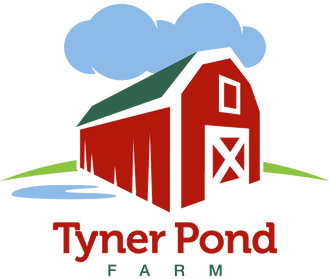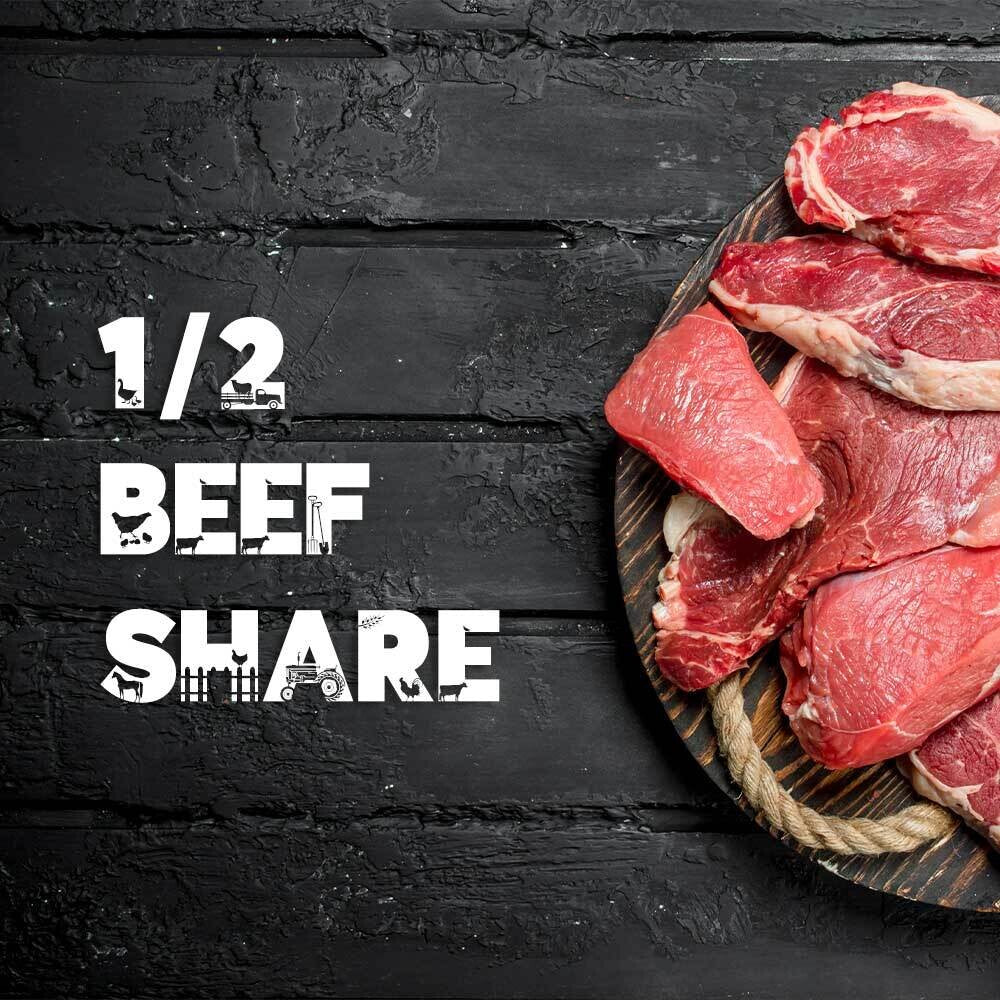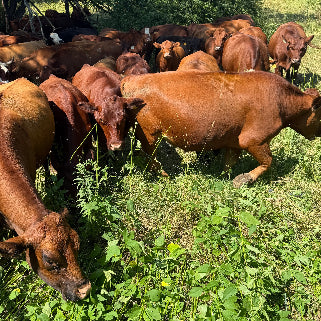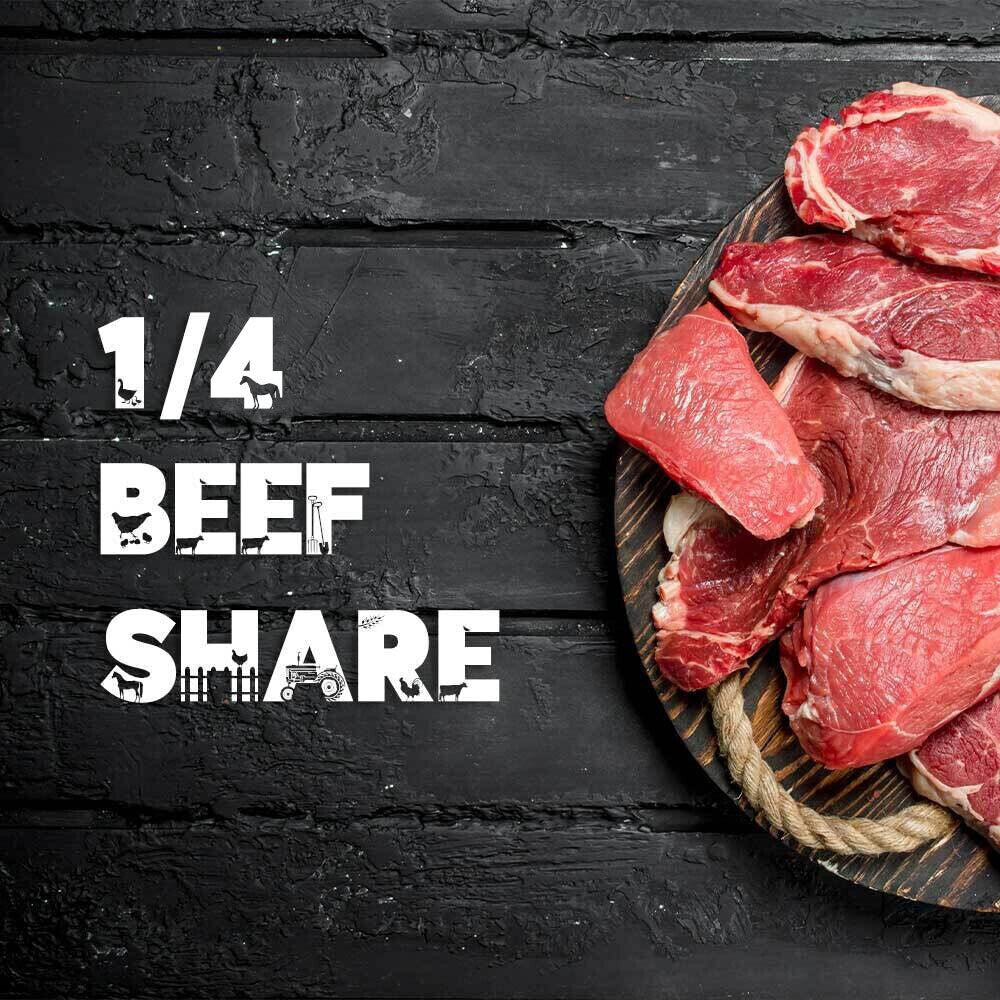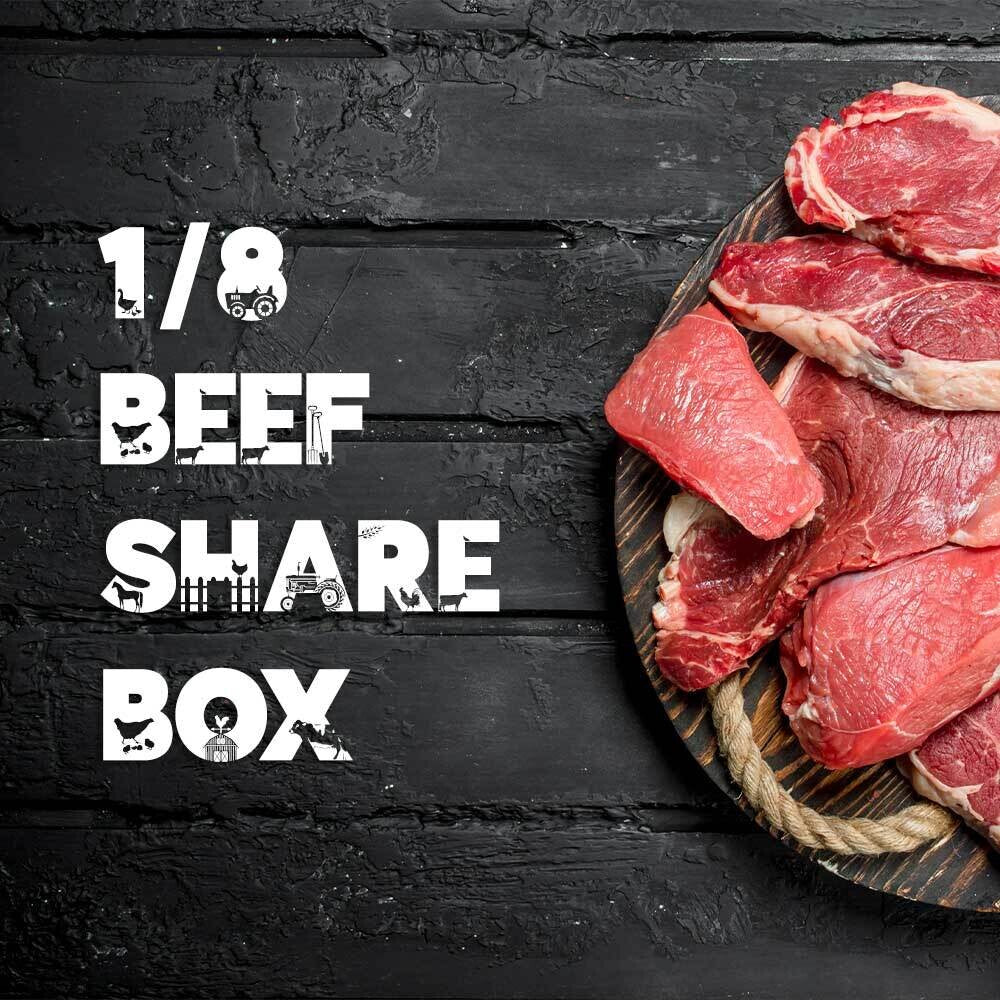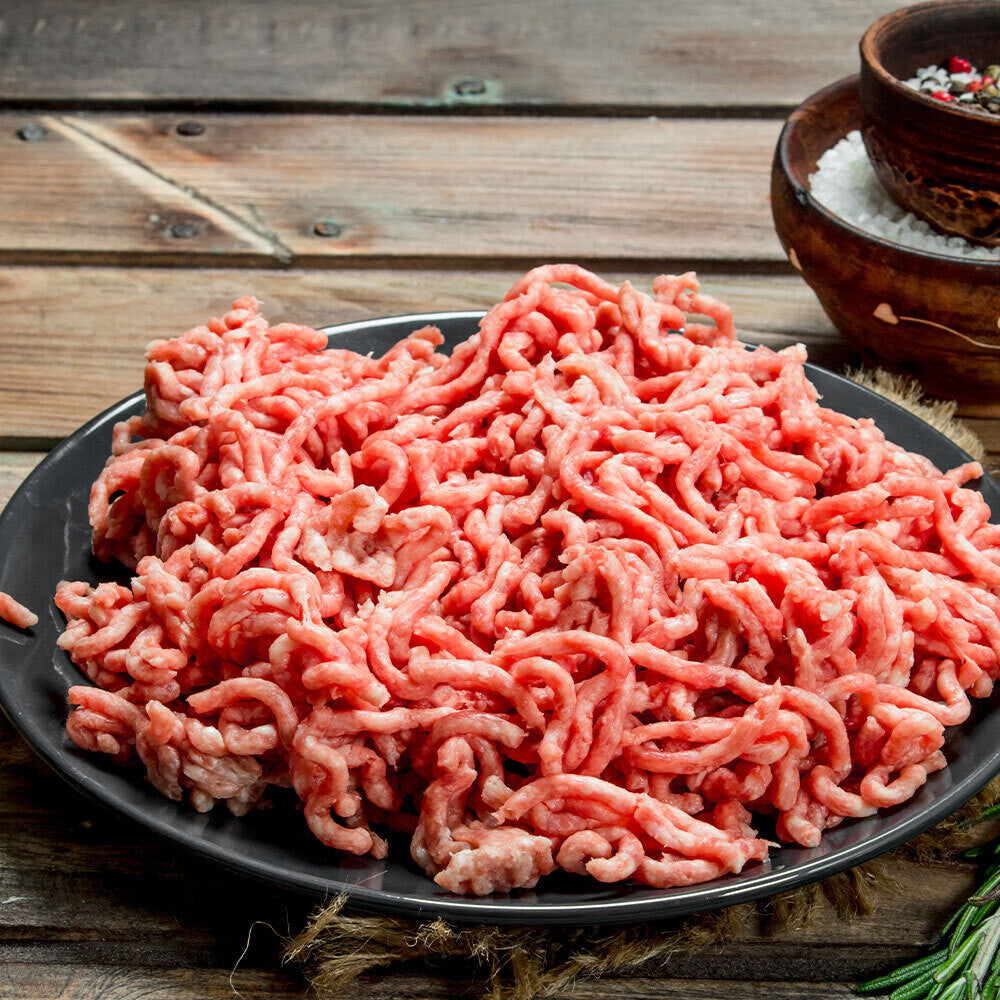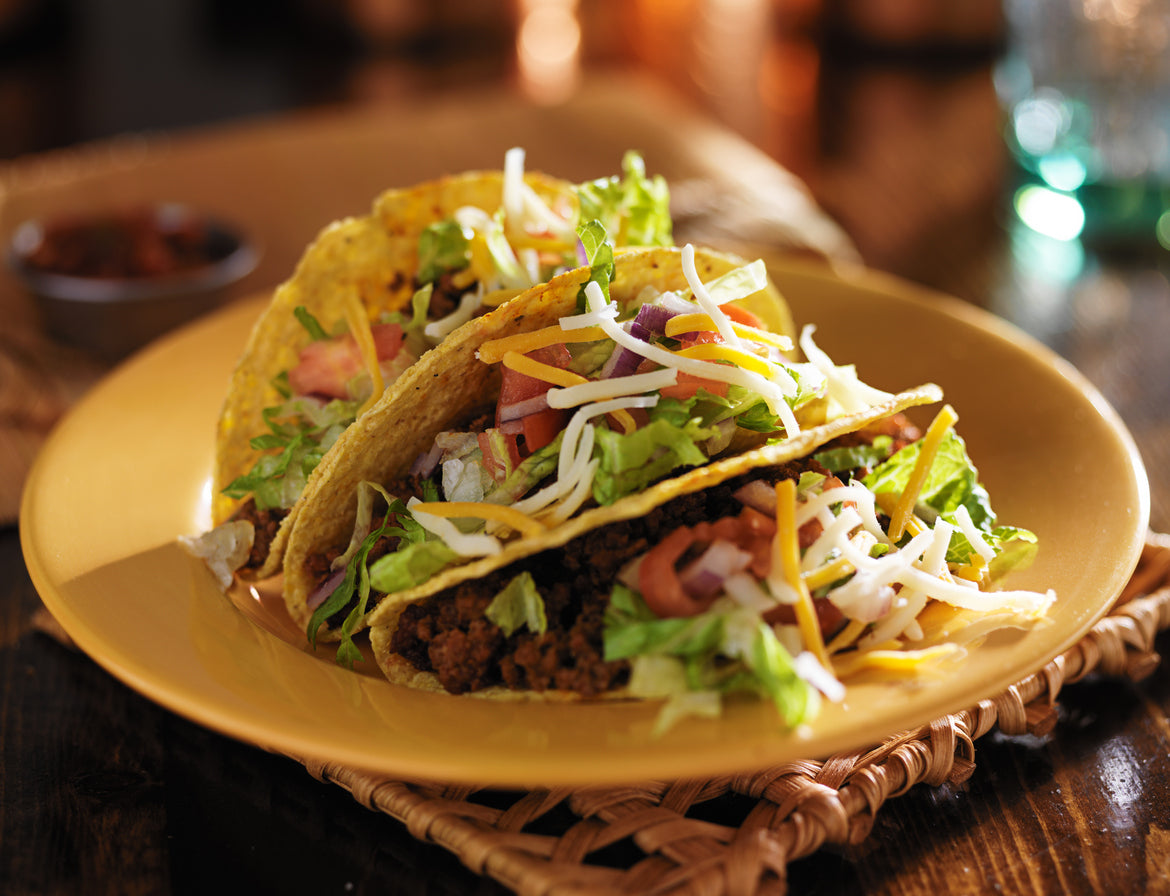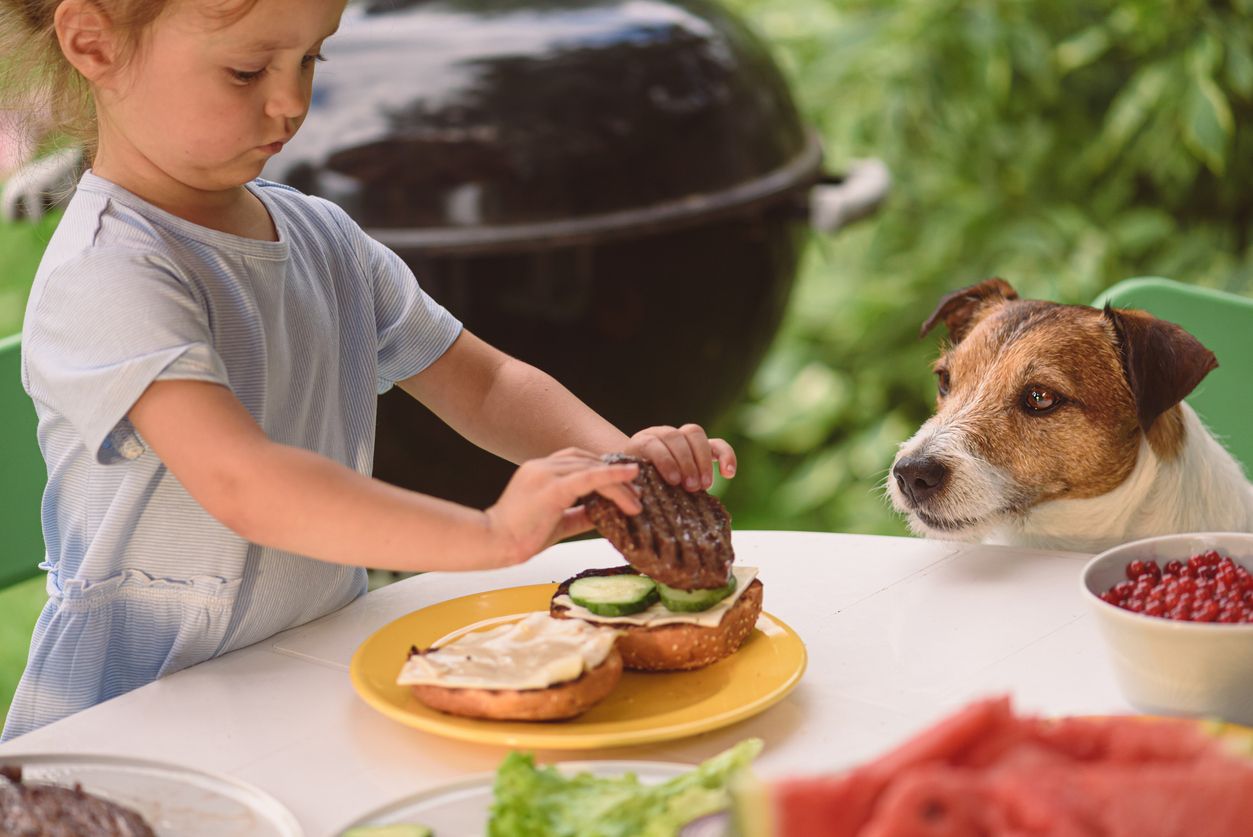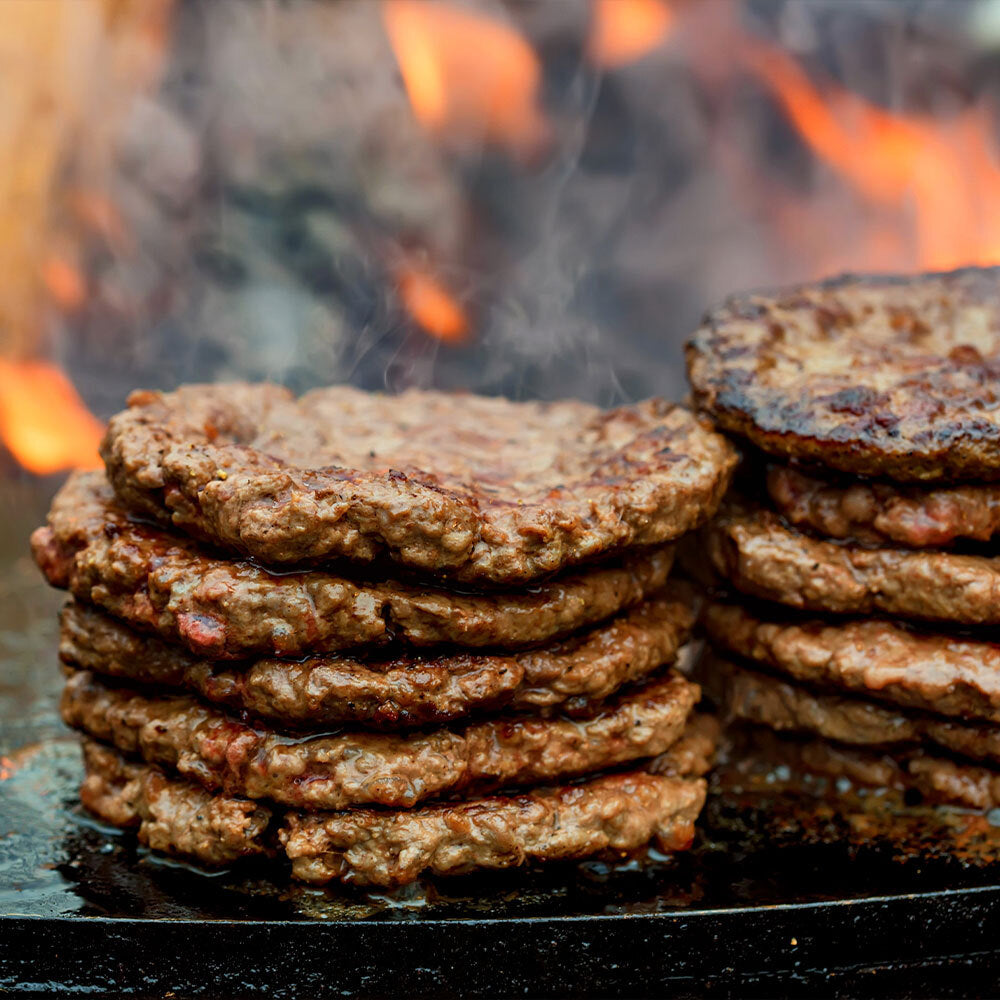
Greg Judy: A Model for Regenerative Agriculture
Greg Judy is a farmer and rancher from Missouri, as well as a friend & mentor who is known for his innovative approach to grazing and regenerative agriculture. When we started Tyner Pond Farm Greg was one of my first educators and can honestly say he's taught me most of what we know about Grazing Grassfed Beef. He's recently become YouTube Famous too. (this is the video from our visit) You can check out Greg Judy's channel here:
 Tyner Pond Visit to Greg Judy
Greg has developed a system of intensive rotational grazing where he moves his cattle frequently to new pasture areas which allows each pasture section (paddock) to rest and recover before being grazed again. This method mimics the natural movement patterns of wild herds and leads to healthier soil, improved water retention and increased biodiversity on his farms. Greg is a strong advocate of regenerative agriculture and has inspired many farmers to adopt his methods, helping to promote sustainable and regenerative practices in agriculture.
Tyner Pond Visit to Greg Judy
Greg has developed a system of intensive rotational grazing where he moves his cattle frequently to new pasture areas which allows each pasture section (paddock) to rest and recover before being grazed again. This method mimics the natural movement patterns of wild herds and leads to healthier soil, improved water retention and increased biodiversity on his farms. Greg is a strong advocate of regenerative agriculture and has inspired many farmers to adopt his methods, helping to promote sustainable and regenerative practices in agriculture.
 Our Visit with Greg Judy
Greg Judy's approach to farming has been heavily influenced by his observations of nature and the way that wild grazing animals interact with their environment. He realized that the traditional approach of keeping cattle in one place for long periods of time was not only unnatural, but it also caused significant damage to the land.
Through intensive rotational grazing Greg has been able to improve the health and fertility of his soil, reduce the need for chemical inputs and increase the biodiversity of his pastures. This approach has also had positive effects on his herd, as the cattle are able to access fresh nutritious forage on a regular basis and are not exposed to the same parasites and diseases as they would be in a confined feedlot environment.
In addition to the environmental benefits, Greg's approach to farming has also been economically successful. He is able to run more cattle per acre than many other farmers, as the intense grazing pressure leads to a more productive and resilient ecosystem. This in turn, has allowed him to generate more income per acre and to build a more sustainable and profitable farming operation.
Overall, Greg Judy's approach to farming serves as a model for regenerative agriculture, demonstrating the many benefits that can be achieved through a holistic and nature-based approach to farming. He continues to inspire and educate farmers around the world and his methods are helping to drive a shift towards more sustainable and regenerative practices in agriculture.
Our Visit with Greg Judy
Greg Judy's approach to farming has been heavily influenced by his observations of nature and the way that wild grazing animals interact with their environment. He realized that the traditional approach of keeping cattle in one place for long periods of time was not only unnatural, but it also caused significant damage to the land.
Through intensive rotational grazing Greg has been able to improve the health and fertility of his soil, reduce the need for chemical inputs and increase the biodiversity of his pastures. This approach has also had positive effects on his herd, as the cattle are able to access fresh nutritious forage on a regular basis and are not exposed to the same parasites and diseases as they would be in a confined feedlot environment.
In addition to the environmental benefits, Greg's approach to farming has also been economically successful. He is able to run more cattle per acre than many other farmers, as the intense grazing pressure leads to a more productive and resilient ecosystem. This in turn, has allowed him to generate more income per acre and to build a more sustainable and profitable farming operation.
Overall, Greg Judy's approach to farming serves as a model for regenerative agriculture, demonstrating the many benefits that can be achieved through a holistic and nature-based approach to farming. He continues to inspire and educate farmers around the world and his methods are helping to drive a shift towards more sustainable and regenerative practices in agriculture.
 Greg Judy Hay Unroller
Greg Judy's innovative approach to hay feeding also includes a method known as "unrolling hay." This method involves spreading out large bales of hay on the ground and allowing the cattle to graze directly from the bales instead of relying on hay feeders.
The unrolling of hay has several benefits over traditional hay feeding methods. First, it eliminates the need for expensive hay feeders and reduces waste as the cattle are able to graze all of the hay, including the leaves and stems, which are often left behind in feeders. This leads to a more nutritious diet for the cattle and improved health and productivity.
In addition, unrolling the hay also has positive impacts on the soil, as the cattle are able to spread out manure and urine, leading to improved soil health and fertility.
Another benefit of unrolling hay is that it reduces the need for large equipment and labor-intensive tasks such as stacking and moving bales. This allows for a more efficient and cost-effective hay feeding system.
Overall, Greg Judy's innovative approach to hay feeding through unrolling the hay demonstrates his commitment to regenerative agriculture and his desire to find more sustainable and efficient methods of feeding his cattle. By incorporating this method into his hay feeding system, he is leading the way towards a more natural and holistic approach to agriculture.
His wife and partner Jan is a saint too!
Greg Judy Hay Unroller
Greg Judy's innovative approach to hay feeding also includes a method known as "unrolling hay." This method involves spreading out large bales of hay on the ground and allowing the cattle to graze directly from the bales instead of relying on hay feeders.
The unrolling of hay has several benefits over traditional hay feeding methods. First, it eliminates the need for expensive hay feeders and reduces waste as the cattle are able to graze all of the hay, including the leaves and stems, which are often left behind in feeders. This leads to a more nutritious diet for the cattle and improved health and productivity.
In addition, unrolling the hay also has positive impacts on the soil, as the cattle are able to spread out manure and urine, leading to improved soil health and fertility.
Another benefit of unrolling hay is that it reduces the need for large equipment and labor-intensive tasks such as stacking and moving bales. This allows for a more efficient and cost-effective hay feeding system.
Overall, Greg Judy's innovative approach to hay feeding through unrolling the hay demonstrates his commitment to regenerative agriculture and his desire to find more sustainable and efficient methods of feeding his cattle. By incorporating this method into his hay feeding system, he is leading the way towards a more natural and holistic approach to agriculture.
His wife and partner Jan is a saint too!
 Amy Baggott with Jan Judy
Amy Baggott with Jan Judy
 Tyner Pond Visit to Greg Judy
Greg has developed a system of intensive rotational grazing where he moves his cattle frequently to new pasture areas which allows each pasture section (paddock) to rest and recover before being grazed again. This method mimics the natural movement patterns of wild herds and leads to healthier soil, improved water retention and increased biodiversity on his farms. Greg is a strong advocate of regenerative agriculture and has inspired many farmers to adopt his methods, helping to promote sustainable and regenerative practices in agriculture.
Tyner Pond Visit to Greg Judy
Greg has developed a system of intensive rotational grazing where he moves his cattle frequently to new pasture areas which allows each pasture section (paddock) to rest and recover before being grazed again. This method mimics the natural movement patterns of wild herds and leads to healthier soil, improved water retention and increased biodiversity on his farms. Greg is a strong advocate of regenerative agriculture and has inspired many farmers to adopt his methods, helping to promote sustainable and regenerative practices in agriculture.
 Our Visit with Greg Judy
Greg Judy's approach to farming has been heavily influenced by his observations of nature and the way that wild grazing animals interact with their environment. He realized that the traditional approach of keeping cattle in one place for long periods of time was not only unnatural, but it also caused significant damage to the land.
Through intensive rotational grazing Greg has been able to improve the health and fertility of his soil, reduce the need for chemical inputs and increase the biodiversity of his pastures. This approach has also had positive effects on his herd, as the cattle are able to access fresh nutritious forage on a regular basis and are not exposed to the same parasites and diseases as they would be in a confined feedlot environment.
In addition to the environmental benefits, Greg's approach to farming has also been economically successful. He is able to run more cattle per acre than many other farmers, as the intense grazing pressure leads to a more productive and resilient ecosystem. This in turn, has allowed him to generate more income per acre and to build a more sustainable and profitable farming operation.
Overall, Greg Judy's approach to farming serves as a model for regenerative agriculture, demonstrating the many benefits that can be achieved through a holistic and nature-based approach to farming. He continues to inspire and educate farmers around the world and his methods are helping to drive a shift towards more sustainable and regenerative practices in agriculture.
Our Visit with Greg Judy
Greg Judy's approach to farming has been heavily influenced by his observations of nature and the way that wild grazing animals interact with their environment. He realized that the traditional approach of keeping cattle in one place for long periods of time was not only unnatural, but it also caused significant damage to the land.
Through intensive rotational grazing Greg has been able to improve the health and fertility of his soil, reduce the need for chemical inputs and increase the biodiversity of his pastures. This approach has also had positive effects on his herd, as the cattle are able to access fresh nutritious forage on a regular basis and are not exposed to the same parasites and diseases as they would be in a confined feedlot environment.
In addition to the environmental benefits, Greg's approach to farming has also been economically successful. He is able to run more cattle per acre than many other farmers, as the intense grazing pressure leads to a more productive and resilient ecosystem. This in turn, has allowed him to generate more income per acre and to build a more sustainable and profitable farming operation.
Overall, Greg Judy's approach to farming serves as a model for regenerative agriculture, demonstrating the many benefits that can be achieved through a holistic and nature-based approach to farming. He continues to inspire and educate farmers around the world and his methods are helping to drive a shift towards more sustainable and regenerative practices in agriculture.
 Greg Judy Hay Unroller
Greg Judy's innovative approach to hay feeding also includes a method known as "unrolling hay." This method involves spreading out large bales of hay on the ground and allowing the cattle to graze directly from the bales instead of relying on hay feeders.
The unrolling of hay has several benefits over traditional hay feeding methods. First, it eliminates the need for expensive hay feeders and reduces waste as the cattle are able to graze all of the hay, including the leaves and stems, which are often left behind in feeders. This leads to a more nutritious diet for the cattle and improved health and productivity.
In addition, unrolling the hay also has positive impacts on the soil, as the cattle are able to spread out manure and urine, leading to improved soil health and fertility.
Another benefit of unrolling hay is that it reduces the need for large equipment and labor-intensive tasks such as stacking and moving bales. This allows for a more efficient and cost-effective hay feeding system.
Overall, Greg Judy's innovative approach to hay feeding through unrolling the hay demonstrates his commitment to regenerative agriculture and his desire to find more sustainable and efficient methods of feeding his cattle. By incorporating this method into his hay feeding system, he is leading the way towards a more natural and holistic approach to agriculture.
His wife and partner Jan is a saint too!
Greg Judy Hay Unroller
Greg Judy's innovative approach to hay feeding also includes a method known as "unrolling hay." This method involves spreading out large bales of hay on the ground and allowing the cattle to graze directly from the bales instead of relying on hay feeders.
The unrolling of hay has several benefits over traditional hay feeding methods. First, it eliminates the need for expensive hay feeders and reduces waste as the cattle are able to graze all of the hay, including the leaves and stems, which are often left behind in feeders. This leads to a more nutritious diet for the cattle and improved health and productivity.
In addition, unrolling the hay also has positive impacts on the soil, as the cattle are able to spread out manure and urine, leading to improved soil health and fertility.
Another benefit of unrolling hay is that it reduces the need for large equipment and labor-intensive tasks such as stacking and moving bales. This allows for a more efficient and cost-effective hay feeding system.
Overall, Greg Judy's innovative approach to hay feeding through unrolling the hay demonstrates his commitment to regenerative agriculture and his desire to find more sustainable and efficient methods of feeding his cattle. By incorporating this method into his hay feeding system, he is leading the way towards a more natural and holistic approach to agriculture.
His wife and partner Jan is a saint too!
 Amy Baggott with Jan Judy
Amy Baggott with Jan Judy
Tags:
Previous post
Winter Grazing: Keeping Our Livestock Fed & Healthy During the Cold Months
Next post
